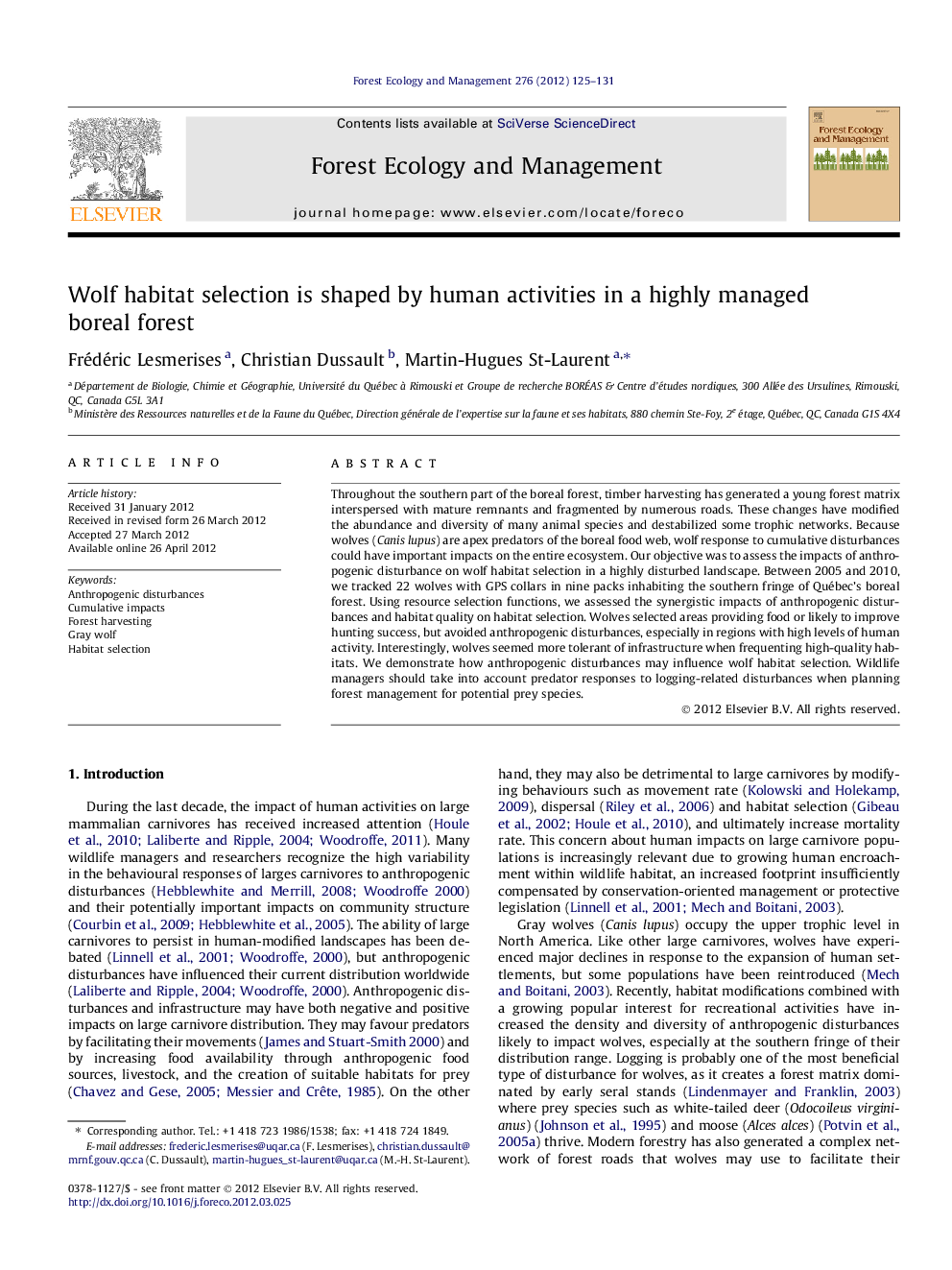| کد مقاله | کد نشریه | سال انتشار | مقاله انگلیسی | نسخه تمام متن |
|---|---|---|---|---|
| 87333 | 159246 | 2012 | 7 صفحه PDF | دانلود رایگان |

Throughout the southern part of the boreal forest, timber harvesting has generated a young forest matrix interspersed with mature remnants and fragmented by numerous roads. These changes have modified the abundance and diversity of many animal species and destabilized some trophic networks. Because wolves (Canis lupus) are apex predators of the boreal food web, wolf response to cumulative disturbances could have important impacts on the entire ecosystem. Our objective was to assess the impacts of anthropogenic disturbance on wolf habitat selection in a highly disturbed landscape. Between 2005 and 2010, we tracked 22 wolves with GPS collars in nine packs inhabiting the southern fringe of Québec’s boreal forest. Using resource selection functions, we assessed the synergistic impacts of anthropogenic disturbances and habitat quality on habitat selection. Wolves selected areas providing food or likely to improve hunting success, but avoided anthropogenic disturbances, especially in regions with high levels of human activity. Interestingly, wolves seemed more tolerant of infrastructure when frequenting high-quality habitats. We demonstrate how anthropogenic disturbances may influence wolf habitat selection. Wildlife managers should take into account predator responses to logging-related disturbances when planning forest management for potential prey species.
► We found synergistic impacts of disturbances and habitat quality on habitat selection.
► Wolves selected habitats providing food or likely to improve hunting success.
► Anthropogenic disturbances were avoided increasingly with disturbance density.
► Wolves were more tolerant of infrastructure when frequenting high-quality habitats.
► Anthropogenic disturbances influence may ultimately predator–prey dynamics.
Journal: Forest Ecology and Management - Volume 276, 15 July 2012, Pages 125–131